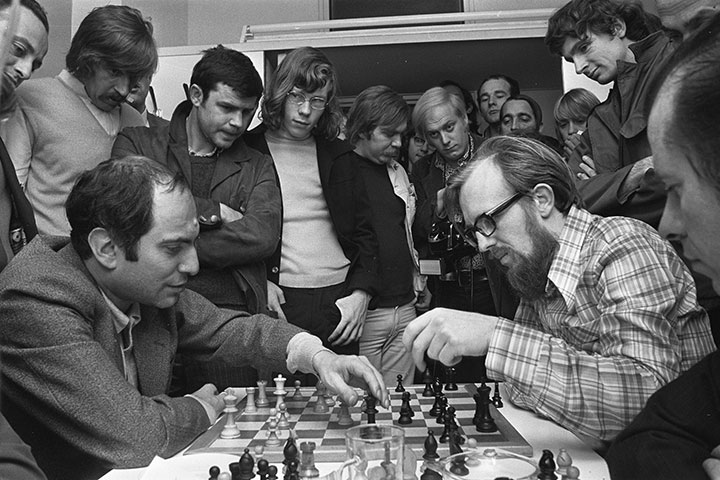


October 7th, 1976, Sheremetyevo Airport, Moscow. Valentin Kirillov boards the Moscow-Milan flight and soon spots Tigran Petrosian and his second, Igor Zaitsev. Greetings all round. Then he finds the seat next to him empty. No sign of Misha. With a sinking heart, he looks down the window. Nothing.
The four of them, Petrosian, Zaitsev, Tal and himself are headed for Varese, Italy, the venue of the Interzonal Playoff Match. It’s a picturesque city with old world charm.
Their rival, Lajos Portisch along with his second, Győző Forintos would be coming directly from Budapest. But what should Valentin do if Misha doesn’t turn up? He is frantic. Then at the last moment, a car pulls up and stops at the ramp. It’s him!
They haven’t prepared much for this match:
Tal was hardly in Riga, constantly coming and going. I mean, we knew Portisch like the back of our hand, and four draws against Tigran would do. After all, could the Hungarian grandmaster really put up much of a fight against two ex-world champions? Basically, the Soviet players sought to wear him down. And yes, none of the games lasted more than twenty moves.
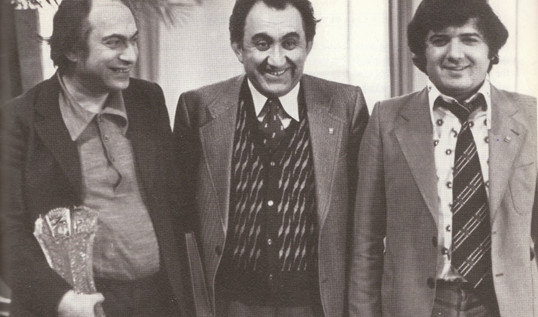
“We are old buddies!” Tal and Petrosian with Rafael Vaganian | Photo: chess-news.ru
Petrosian, however, is not taking chances with Portisch. During their last Candidates’ Match (1974) he had prevailed over the Hungarian only after a long war of attrition (+ 3 -2 = 8). So he has prepared seriously with his second, Igor Zaitsev.
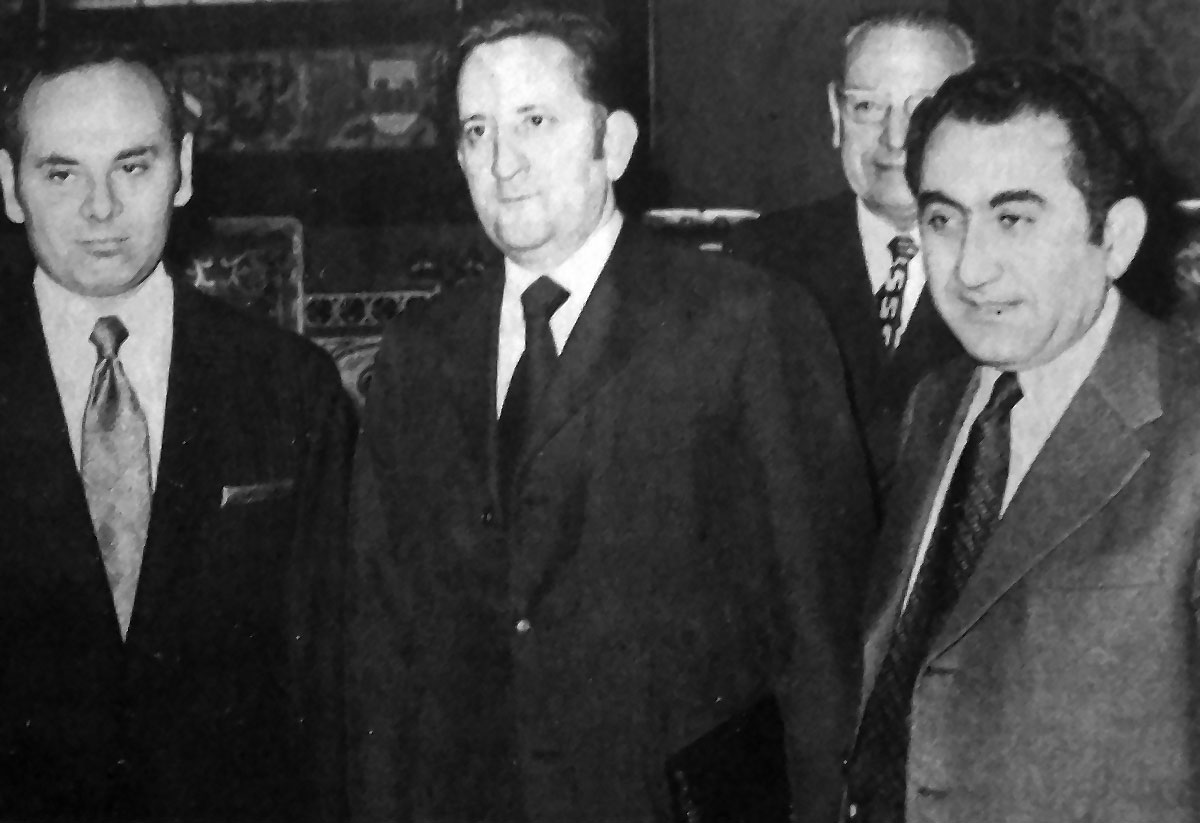
Portisch and Petrosian flanking Arbiter Armin Heintze, Candidates’ Match 1974 | Photo: Chess Life & Review, May 1974
At Milan airport, they are received by their hosts. It’s a short drive to Varese. The hosts have spared no effort to ensure that the stay of their guests is comfortable. The visitors are accommodated in Palace Grand, a hotel with a chequered history (it opened its doors in 1913!) and tradition of hospitality. Located on a little hill, the Colle Campigli, it offers a majestic view of the city on the one hand, the lake and the mountains on the other.
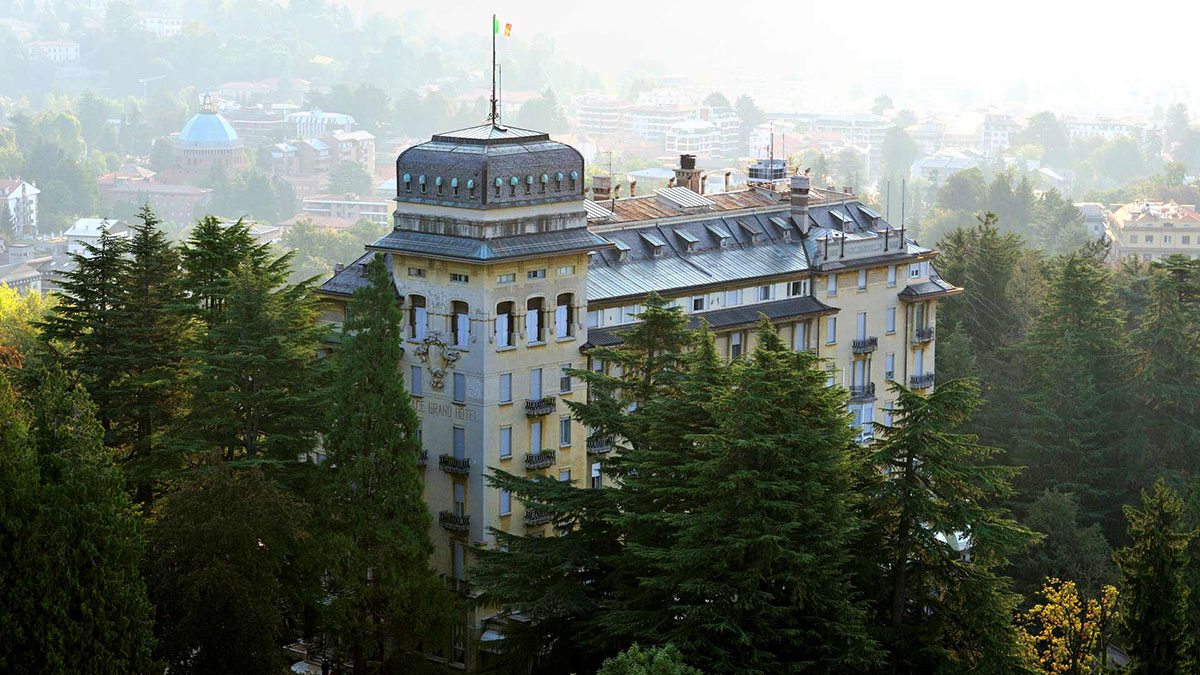
An old-style resort with elegance and splendour! | Photo: palacevarese.com

The rooms are comfortable and they offer a breathtaking panorama | Photo: palacevarese.com
The match is held in Civic Museum, Villa Mirabello.
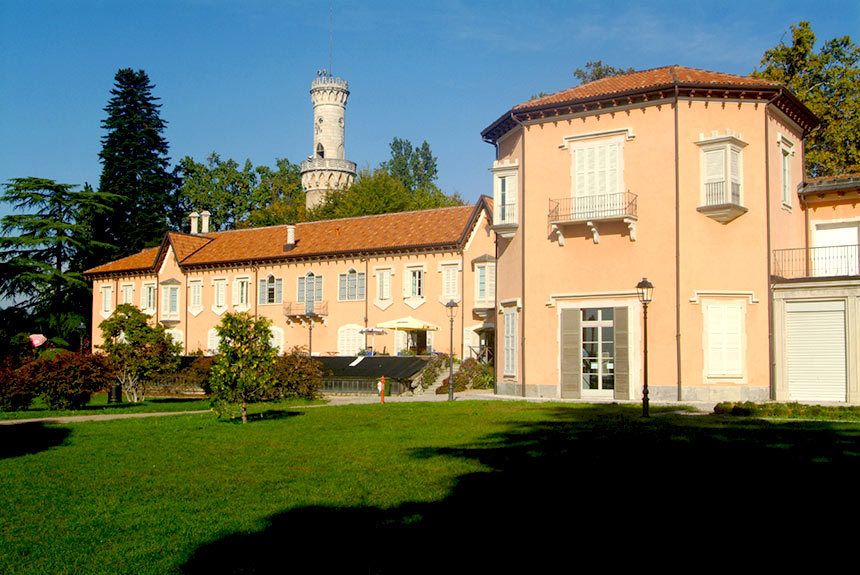
Villa Mirabello (Video walkthrough) | Photo: comune.varese.it
Then the play begins! As expected, the first game is a short draw between Tal and Petrosian. No surprises there. But how boring for those watching! The real battle commences on the next day. Lajos Portisch, playing White has Misha under pressure. Our hero just manages a draw. The next day is a holiday for him as Petrosian and Portisch have to play. The Hungarian is known to be an exponent of the classicist school. However, today he plays the whole opening in unorthodox style. Although Petrosian is taken by surprise, he remains in control and maintains a slight edge in the middlegame. It is not enough to win, though. However, he tension gets to the Hungarian he makes only one impatient move to break free and gain initiative. The wily Armenian seizes the chance with both hands and beats him.
It’s a moment of rejoicing for the Soviet camp as a dangerous rival has been put away (well, almost). On the next day Tal and Petrosian play out their second little draw. No one is taken in by the charade.
The trial of strength comes in the next round. It’s Portisch versus Tal. A draw would suit Misha fine. But he has little taste for dry positional manoeuvring. So he wants to open the game with 1.e4! In itself, it’s not a bad idea. Just two months before he beat Portisch with the Spanish and in style! But Valentin has a premonition. Portisch has “always” played 1…e5 and defended against the Spanish. But he is also known to play the Sicilian Najdorf on occasion. What if he plays the Poisoned Pawn Variation?
“Nah, that’s not his style at all” says Misha, “Do you know how much time we spent on that variation when we were preparing Karpov for his match against Fischer? You’re telling me, Portisch knows its ins and outs better than me?”
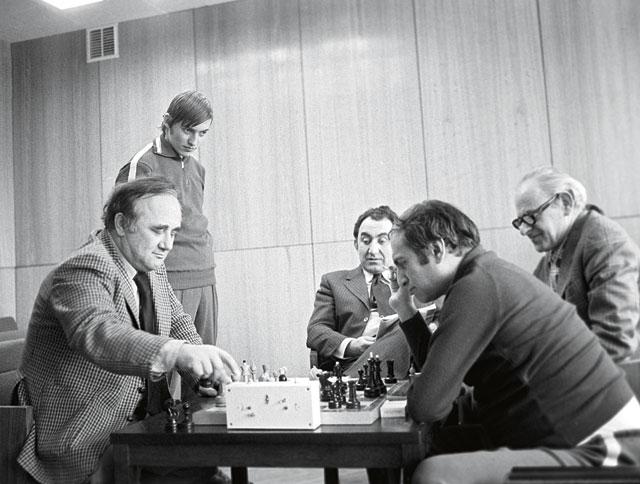
A light moment amidst serious preparation — Tal and Geller at play watched by Karpov, Petrosian and Furman | Photo: Chess-news.ru
Misha has many happy memories of the line right from 1956 when he beat Alexander Tolush in a celebrated game in the USSR Championship to Dubna 1973 when he gambled against Igor Platonov and won.
A wonderful finish that delighted Tal fans all over the world. It also finds its way to the chessboard of an unknown “admirer” from Budapest.

Lajos Portish | Photo: Cesar Horta via YouTube
Valentin does not know what the man from Budapest may have found. What he does know is that Misha’s form here in Varese is suspect. Besides, they have hardly spent any time preparing for this variation. So he extracts a promise from Misha that he would go for a quieter line with an exchange of queens if Portisch opts for the Poisoned Pawn Variation.
Next day his forebodings come true. Portisch plays the Sicilian Najdorf and that very move 7…Qb6 comes up on the board. Misha accepts the gauntlet with 8.Qd2, the sharpest line in the variation. His promise to Valentin to play the quieter 8.Nb3 is gone with the wind.
A debacle! Misha ignored the old adage, “Your opponent also has plans for you!”
Years later Lajos Portisch recalled what happened. In the following interview, he tells us how he anticipated the collusion between Petrosian & Tal and what he did to sidestep their “arrangement”. He also explains the course of the match and its aftermath:
I demanded that the draw be done in such a way that Tal and Petrosian would play first in each round. Misha immediately asked, “Lajos! But three years before you didn’t say that!” I retorted, “Yes! But then the opponents were different!” And I was right, because in all the games they made quick draws between themselves. Unlike Polugaevsky and Geller, who fought.
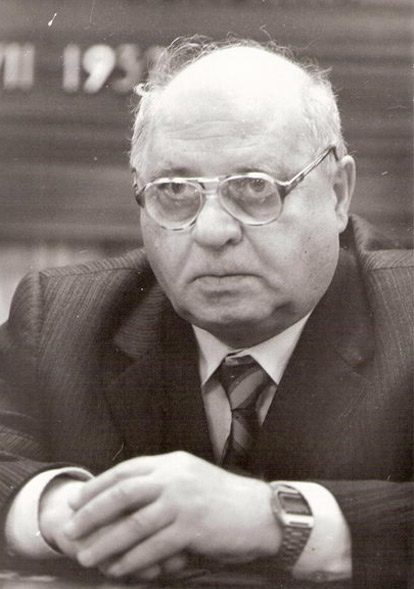
I had the worse Berger score and I knew I had to play sharply. It so happened that I forced pace in the game with Petrosian and lost. In the next round when I met Tal, he thought I was finished. But I gave him a surprise. I played the Sicilian Najdorf (after that I began to use this variation often), and won one of the best games in my career. But then Tal himself was to blame. He and Petrosian did not play at all, and I had to play my last game with Petrosian.
They said, Petrosian got a call from Baturinsky.
“Do you know who it was? What did Soviet chess players call him? "Black Colonel"! But of course, they couldn’t say that openly. Any way Baturinsky is no more. There is a proverb about the dead, say something good or say nothing.
OK, Petrosian promised Baturinsky he would play for a win even with Black.
Baturinsky | Photo: ChessPro.ru
But during lunch, he walked over to our restaurant table. Yes, we ate in the same restaurant.
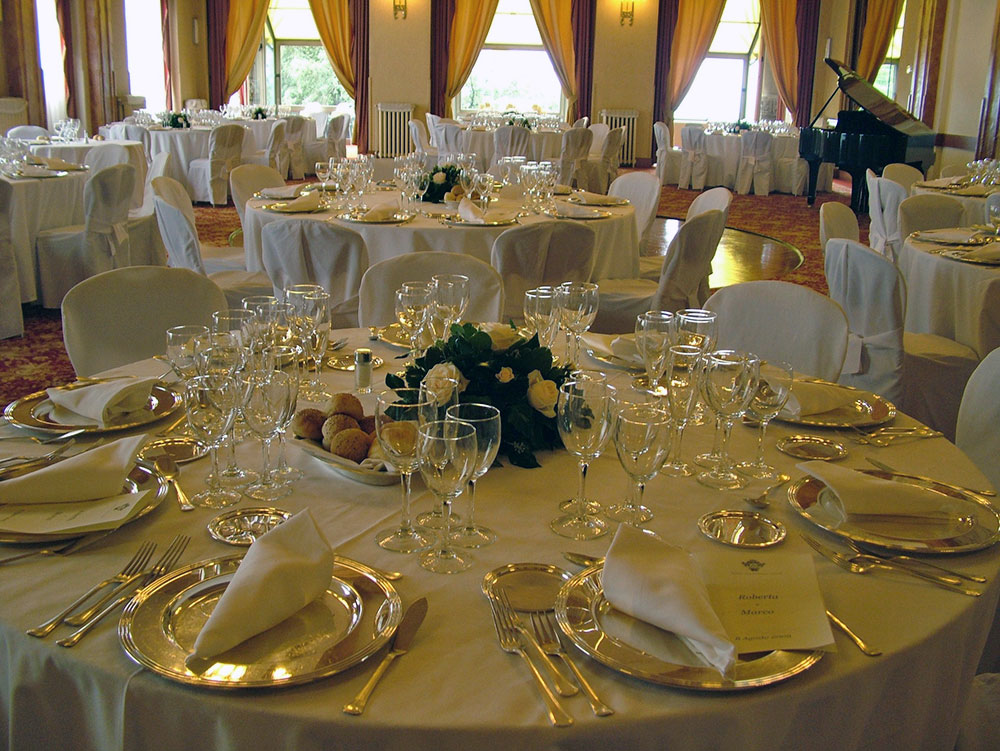
Photo: palacevarese.com
Forintos was then my second.

Gyoezoe Forintos in 1996 | Photo: GFHund CC BY 3.0 via Wikimedia Commons
When I saw Petrosian approaching, I asked Forintos, “What do you think he wants?” Petrosian came up and said, “Lajos, I offer a draw.” I smiled and, of course, could not refuse him.
Tal:
The Playoff was twice postponed — due to the illness of both Portisch and Petrosian. By way of joke I also wanted to take a time out!
Perhaps it was a mistake to have those quiet draws with Petrosian. Of course, playing with him is not easy. But still eight games are not four, and the tension in all eight could bring me to a decent shape in the second half of the tournament.
When Portisch lost to Petrosian, I was at a crossroads. I could either play calmly and draw or fight and win, finishing the tournament right away, since Portisch’s second defeat would give him no chance for a comeback. I chose the third, most dangerous path. I made one move for the sake of victory, the other for the sake of a draw. However the position on the board was sharp and I was punished for my inconsistency.
The rest of the Match sees just one failed attempt by Misha to press Portisch and level scores. The Hungarian does not succumb and our hero is forced to sign a peace treaty.
Petrosian’s problem is not Portisch, but Baturinsky. “What are you doing? Stop Lajos, Will you?” bellows the Boss on the phone.
The Old Colonel has every reason for worry. For the first time the Soviets are confronted with an all-star lineup of rivals from Europe, Larsen, Mecking and Portisch, not to mention the sworn enemy of the State, Korchnoi who has defected to the West.
Petrosian mollifies the Boss, promising he would do everything in his power to put down Portisch. He of course has no intention of doing so. What he needs is a bit of diplomacy to persuade Portisch to agree to a cosy little draw in the last round. Surely, the Hungarian should not object to the “arrangement”. They would both qualify for the Candidates’. But what about Misha? He would be eliminated. Let him face the music in Moscow.
Everything goes according to plan. Portisch and Petrosian agree to a draw. Tal is out.
Final score: Petrosian 4½ ( +1 -0 = 7)
Portisch 4 (+1 -1 =6)
Tal 3½ (+0 -1 = 7)
The battle of Varese was my last tournament as Tal’s second. I took a lot of heat at the next Latvian Chess Federation meeting, including for Portisch’s 7…Qb6. How could you not have foreseen that and developed a suitable game plan I kept quiet, not wanting to stab Misha in the back. I figured, I would let him explain what happened himself but he did not utter a word. I think that the decision to let me go had been made well in advance, by people not in attendance at the meeting. Actually I had been planning on stepping down anyway, realizing that I simply couldn’t keep up with all the new theory, especially all the opening novelties.
The end of our professional relationship had no effect on our personal relations; we continued to see each other fairly often.
Photo: ElkandRuby.com
In 1978 he gave me a signed copy of his book with a touching note on the inside cover,
“To Valentin who always guards the fire”.
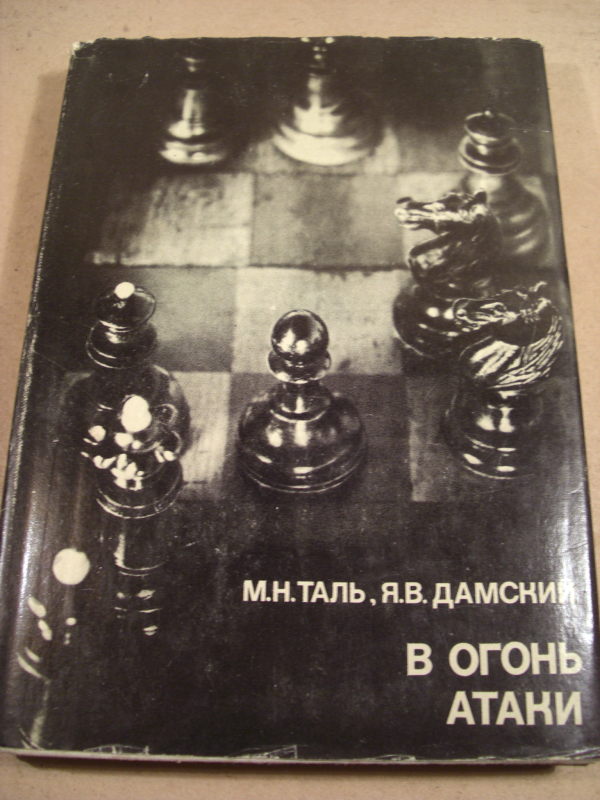
Photo: Hrycak.com
“Into the fire of attack” by Tal and Damsky
Post script: There is a rare work on the Biel and Manila Interzonals along with the Varese Playoff Match by János Flesch. It deserves to be better known.
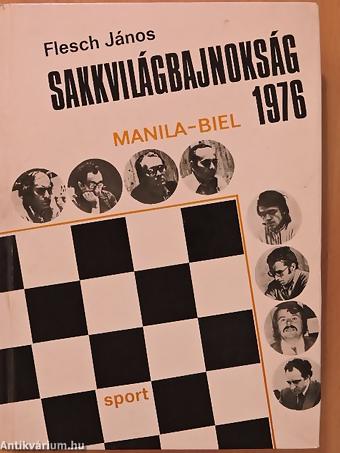
Photo: antikvarium.hu
To be continued...
Note: Tal’s own comment on his debacle is taken from the Russian book, Михаил Таль Творчетсво, 1974-1979, Валентин Кириллов, автор-составитель "RETORIKA, A" Рига 2001 (“Mikhail Tal, Games, 1974-1979”, compiled and edited by Valentin Kirillov, RETORIKA A, Riga.2001)